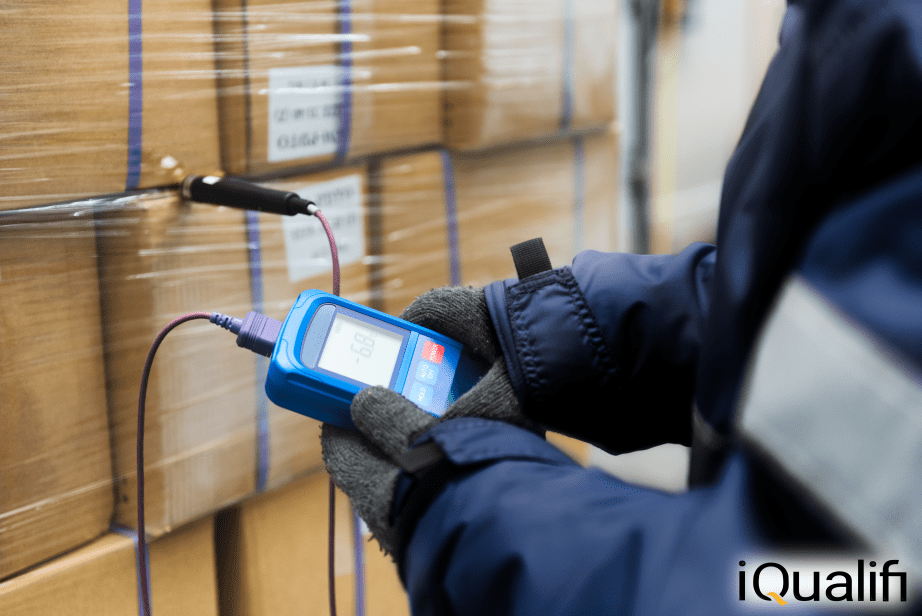Food Hygiene training is the essential ingredient to getting a 5 Star food hygiene rating. A 5 star rating will help you to stand out amongst your competitors and attract more customers. It helps you to project an image of cleanliness, professionalism and safe food production which will strengthen your reputation. Read on to find out how you can improve your food hygiene rating at your next environmental health inspection.

1. Record Keeping
Great record keeping is the unsung hero of good inspection results. If you have incomplete records you can flush your chances of a 5 star food hygiene rating away in a moment. Getting into good record keeping habits and keeping them up to date every day will demonstrate to an Environmental Health Practitioner that you are serious about food safety.
Businesses are legally required to document Hazard Analysis and Critical Control Points (HACCP). These should contain evidence that you understand where the most hazardous parts of your food production are and that there are controls in place to manage them and to make it as safe as possible. For many small business this will mean using the Safer Food, Better Business Pack (SFBB), though this is only one way to meet the legal record keeping requirements.
These records help you to demonstrate ‘Due Diligence’ and enable the business to defend themselves from allegations of food poisoning and legal action. Your records should be able to demonstrate food in you production area has come from to help you with Farm to Fork traceability, or in the event of a food safety recall. They should also contain the results of your continued temperature monitoring of key areas such as chillers and hot holding of food.

2. Temperature Checks
To achieve a 5 star food hygiene rating, food needs to be stored and cooked correctly. One aspect of this is monitoring key temperatures and being aware of the legal and best practice requirements. For example, chilled food must be stored at or below 8°C, and best practice recommends that fridges remain at between 1 – 5˚C.
Temperatures need to be monitored with an accurately calibrated thermometer or probe. It may not be sufficient to rely on the digital display on your fridge or chiller cabinet if it does not measure sufficiently accurately.
Make sure that you are aware of the temperature requirements that apply to your business such as for cooking, hot holding, fridges and freezers. Maintaining excellent temperature control is a critical part of producing food that is safe to eat and a key ingredient of Food Hygiene training.

3. Kitchen Procedures and Cleaning
When an environmental health officer walks into your kitchen, what is their first impression going to be? An experienced environmental health practitioner will recognise the difference between the mess created during a busy lunchtime shift and a systemic lack of cleaning. A clean kitchen is an important way of creating a good first impression and goes a long way towards winning you that 5 star food hygiene rating. Keep cleaning routines regular and the grease, dust and dirt is much more manageable. If you leave it for a few days then you may be creating such a mountain to climb that you will never get caught back up. #level-2-food-hygiene
Your environmental health practitioner will also be interested to see how your kitchen procedures are working. Do you have effective controls for keeping raw and ready to eat foods separate? For food production to be safe, there need to be good cross-contamination controls in place to help prevent bacterial pathogens transferring from raw foods like unwashed fruit and vegetables or raw meat on to prepared foods such as a sandwich.

4. Staff Food Hygiene Training and Qualifications
Your staff can be your biggest asset. They can ensure that your procedures are followed correctly and that high standards are maintained. The good news is that conscientious and well trained staff are much more likely to stay at a business that takes food safety seriously.
Food Hygiene training your staff in good personal hygiene will reduce the likelihood of unintentional contamination by staff. Staff need to know what to wear and how to behave in the kitchen. One of the most important ways in which staff can impact your 5 star food hygiene rating is effective hand-washing. You need to make hand washing routine easy by having fully stocked hand washing facilities such as hot water, soap and a dedicated basin readily available.
You may want your staff to have dedicated food safety and hygiene training, such as iQualifi’s Online Level 2 in Food Safety and Hygiene. A food hygiene training course will ensure that staff understand why food production safety is important, how they can have a positive impact on the safety of food you produce. #food-hygiene-training

5. Control of Allergens
Allergen control is a growing concern for food safety. Being able to demonstrate that you take segregation of allergens seriously will help you to achieve your 5 star food hygiene because it proves that you understand how dangerous contamination can be to a susceptible person. On average in the UK there are 10 deaths associated with undeclared allergens every year. You may require a particular area in the kitchen for working with allergenic products, or use different coloured equipment to minimise the chances of cross-contamination.
So don’t fear your next environmental health inspection. Fly through with a 5 star food hygiene rating by following our top tips. And if you feel that you would benefit from some additional training on any aspect of safe food production then why not try iQualifi’s Online Level 2 in Food Safety and Hygiene to set your business off on the right track.
